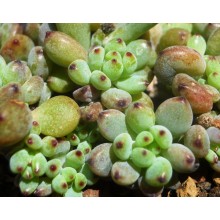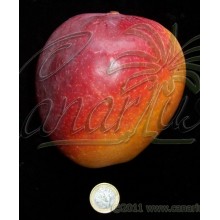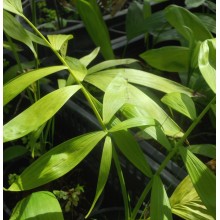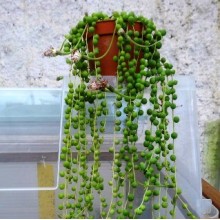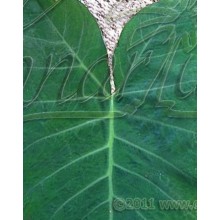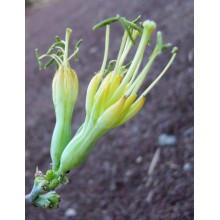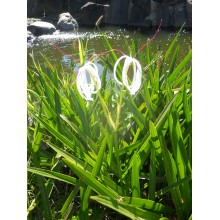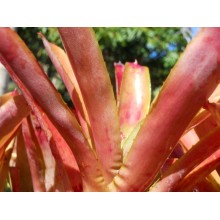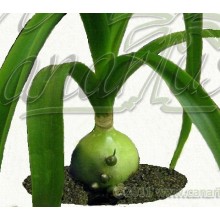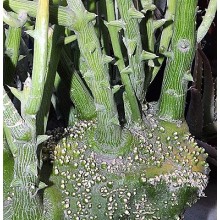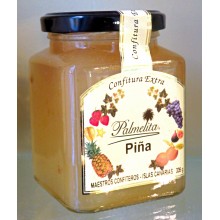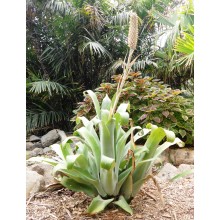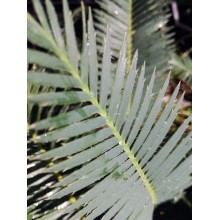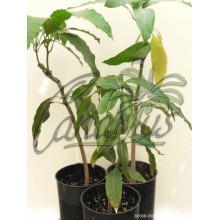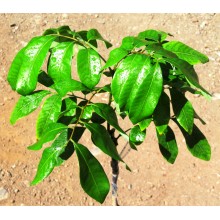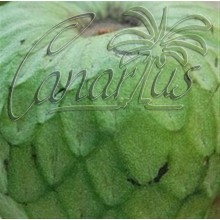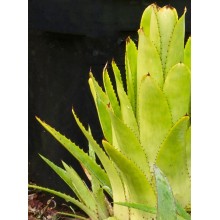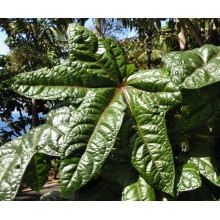I più venduti
I prodotti più venduti

-
Graptopetalum pachyphyllum
Graptopetalum pachyphyllum
Small ground-covering Graptopetalum with compact rosettes of colourful leaves that can become green, blue or pink according to the season or sun exposure. Flowers are also beautiful, white-green banded in dark red. It is known from populations scattered in the mountains of central Mexico
10,40 € -
Mangifera indica 'Heidi'
Mangifera indica 'Heidi'
Heidi is a late bearing mango cultivar. It is yellow-red skinned at maturity, with sweet and spicy flavour and low fibre presence in a yellow pulp, it grows in between 400-500gr. Widely grown in South Africa and India. It does well in the Canary Islands.
52,30 € -
Chamaedorea klotzschiana
Chamaedorea klotzschiana
This palm has quite unique leaves because segments are grouped, so each leaf has its own "rhythm". It is a small-sized uncommon palm from Central America. It has a solitary bamboo-like stem. It is very cool-tolerant and grows perfectly in the shade in the coastal mediterranean.
27,00 € -
Xanthosoma sagittifolium - Tannia, Malanga
Xanthosoma sagittifolium - Tannia, Malanga
Pack of two corms or stem sections - Elephant-ear plan with edible stems and corms. In this cultivar petioles and leaf veins are green. It loves water and can be grown in ponds or buckets as well as in regular pots with damp soil.
21,60 € -
Agave nizandensis
Agave nizandensis
This is a truly different agave, an absolute miniature beauty, with soft and brittle Aloe-like leaves. Leaves are tender, dark green with a paler stripe in the middle. It thrives in semi-shade, in warm and wet but well drained conditions. It can even be used in terrariums, or as an epiphye.
32,00 € -
Crinum americanum
Crinum americanum
This swamp crinum is native to Texas, to So.Carolina, Mexico and some Caribbean islands. It loves water and it can fit in your pond, but it can also thrive in a simple pot. Leaves are erect and plants clump slowly. It taks frost!
26,00 € -
Neoregelia amandae
Neoregelia amandae
Small bromeliad with incredible changing colours. Leaves are thick and glossy, with some typical puckles on the base. Flowers are bright violet-blue. This plant came with no name but it eventually keyed out as Neoregelia amandae.
18,60 € -
Albuca bracteata
Albuca bracteata
Unusual bulbous plant with a showy, glossy green bulb growing above ground, up to 10 cm in diameter. Long pale-green leaves and tall spikes of fragrant flowers. Easy growing. It takes hard drought and frost to about -4 C.
13,70 € -
Adenia globosa
Adenia globosa
Very exotic caudex, with a swollen green base. The plant lacks leaves and all the stems are green for photosynthesis. With time, well grown specimens will show a striking symmetry.
19,20 € -
Ananas comosus - Canarian Pineapple Jam
Ananas comosus - Canarian Pineapple Jam
A pineapple jam made in Tenerife. It is made of pineapples grown in the Canary Islands, sugar, carob flour and citric acid. No preservatives and artificial colours. jams are produced on a small scale here on the island of Tenerife.
13,80 € -
Dioon argenteum
Dioon argenteum
2 years old, 20-30 cm tall. This Dioon is elegant and different, with glowing blue arching leaves with "V"arranged leaflets
68,00 € -
Dimocarpus longan 'Dang'
Dimocarpus longan 'Dang'
Dang is a Thai cultivar of crisp-fleshed longan. It is a heavy-bearing variety with fair quality fruit, but it is not particularly crisp. Fruits are sweet, quite large with with good flavour. Stems are reddish.
56,40 € -
Papaya and Orange Jam
Papaya and Orange Jam
Papaya and Orange is the perfect mix, because they citrusy flavour is just what the papaya needs. The mix of this two fruits is very popular in fresh fruit juices in our archipelago, but also this jam is very appreciated! Palmelita jams are produced on a small scale here on the island of Tenerife.
13,80 € -
Annona cherimola 'Madeira'
Annona cherimola 'Madeira'
Grafted tree. Choicy self-fertile variety of cherimoya or "custard apple". It is a small subtropical tree, native to high-elevations in Central and South America where frost occurs. Fruits well in the Mediterranean.
44,20 € -
Aloe plicatilis (Kumara plicatilis)
Aloe plicatilis (Kumara plicatilis)
Thick 15-20 cm 1-y old rooted plant - It is a spectacular species, relative of the genus Aloe with leaves arranged as fans. Kumara plicatilis grows as a shrub or small tree and thrives outdoors in the coastal Mediterranean. It blooms in winter and its flowers are much larger than most aloes !
45,00 € -
Aechmea x 'Rambo'
Aechmea x 'Rambo'
Frost-resistant hybrid, developed for non-tropical growers. It is descendant of the frost hardy Aechmea distichantha, crossed with Aechmea phanerophlebia. 'Rambo' builds a swollen monster rosette, of lime-green leaves armed with black spines. The pink inflorescence comes up from the top of the closed rosette.
37,70 € -
Abelmoschus manihot 'Tonga' - Aibika
Abelmoschus manihot 'Tonga' - Aibika
This shrub is both an ornamental plant and a nutritious vegetable, often called Aibika, but a hundred different names are used in different countries. It was domesticated in South Asia and then spread to Papua and the Pacific islands.
23,28 € 29,10 €Prezzi ridotti!















